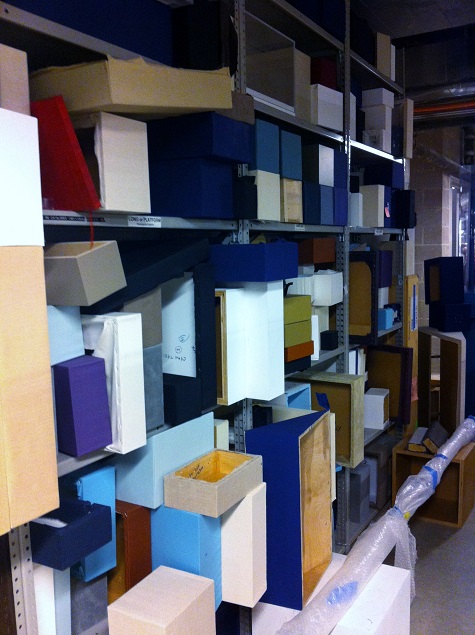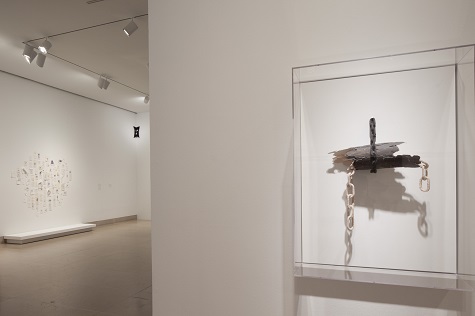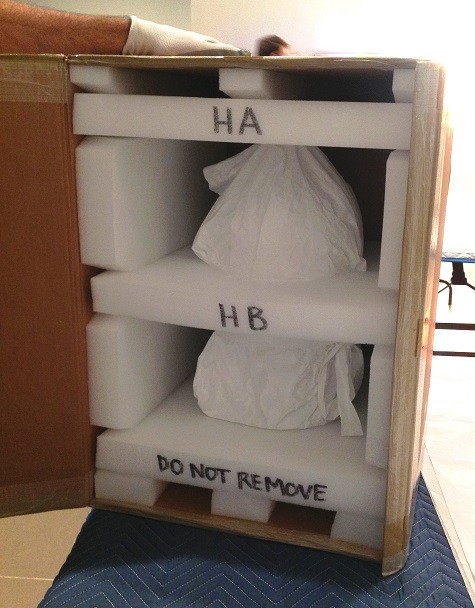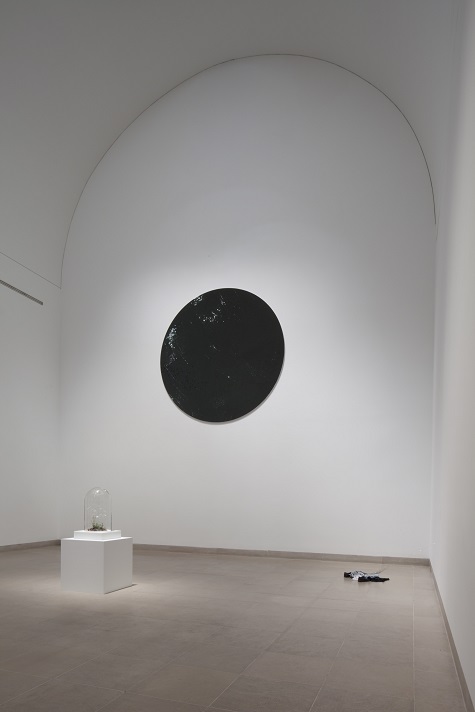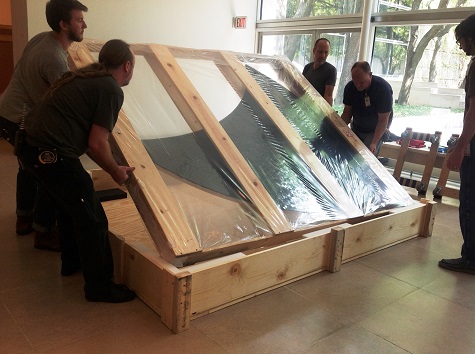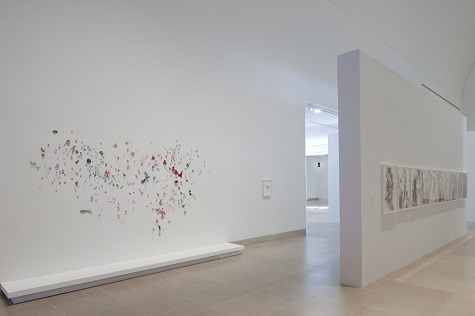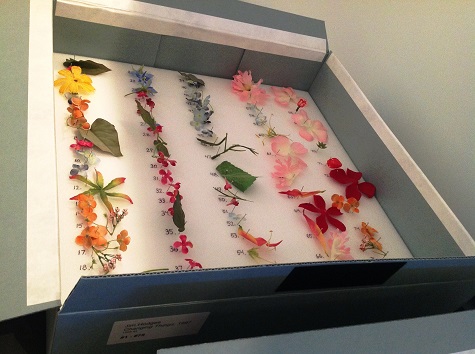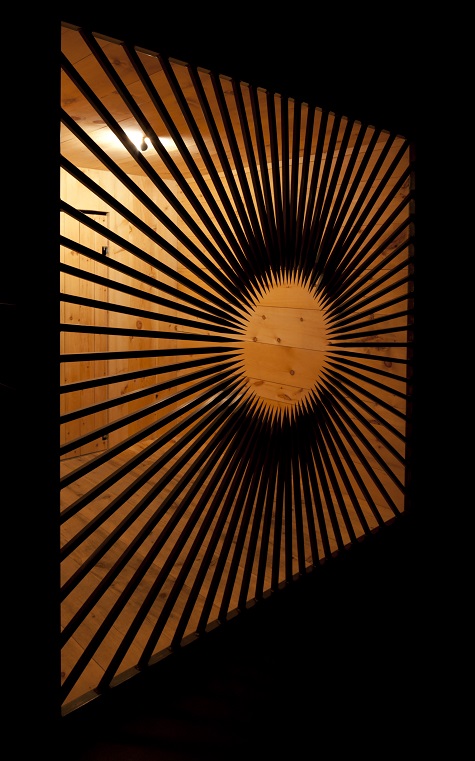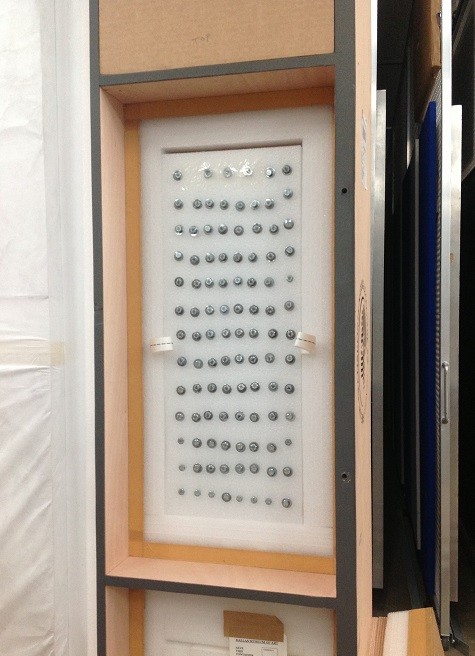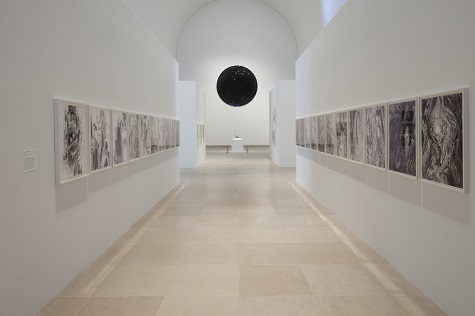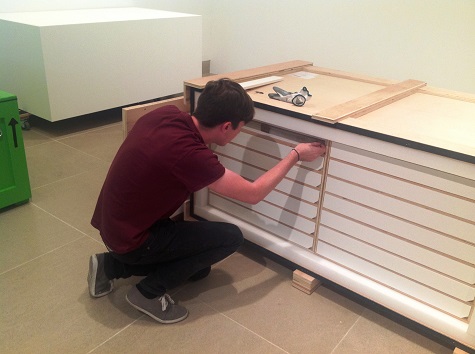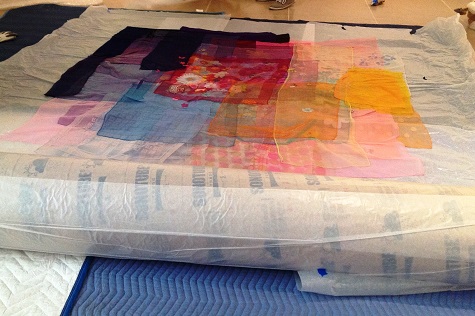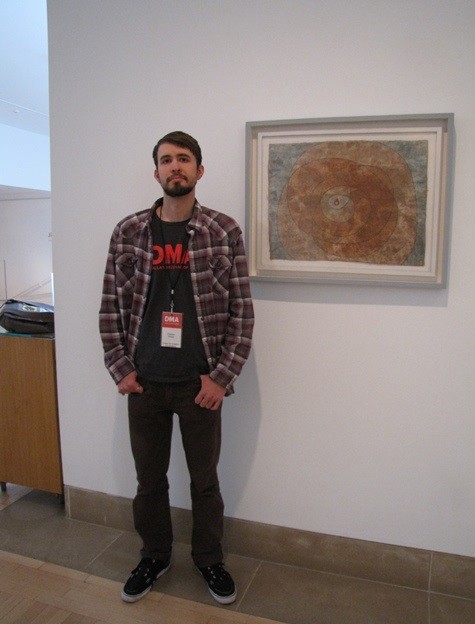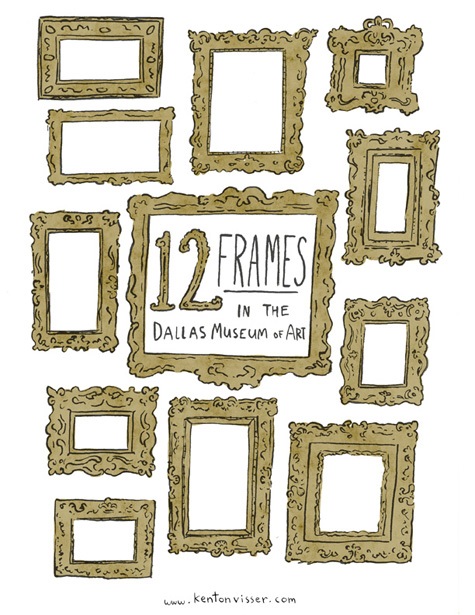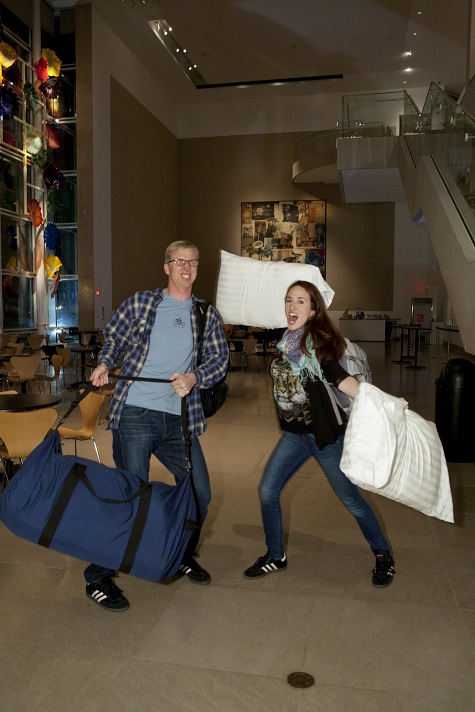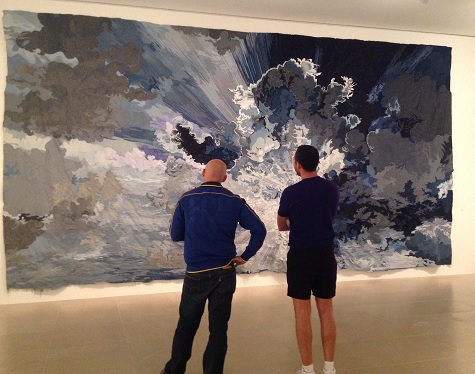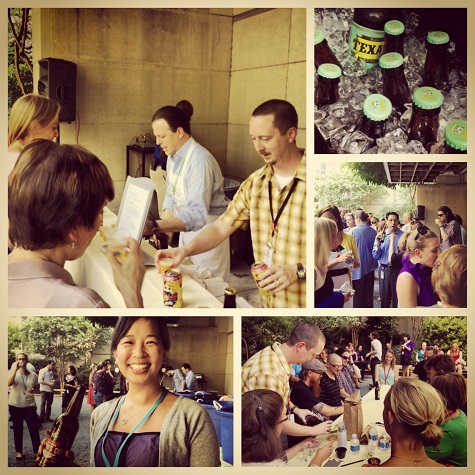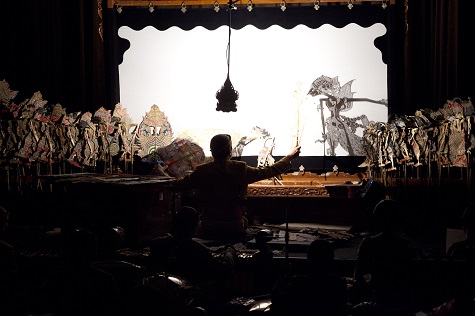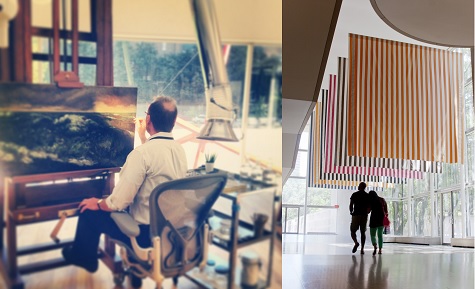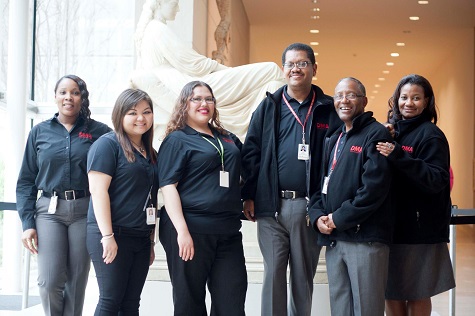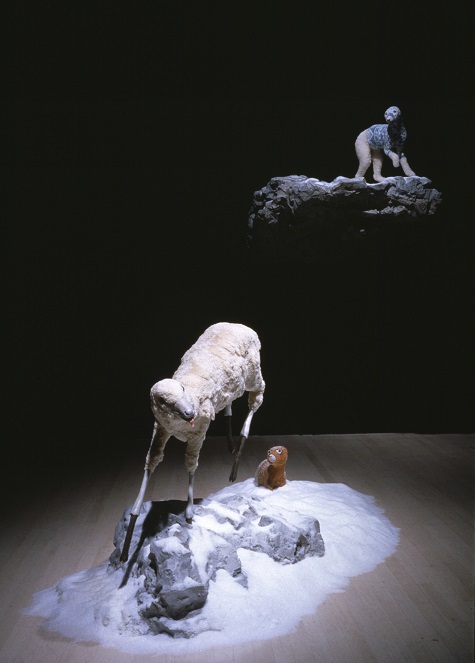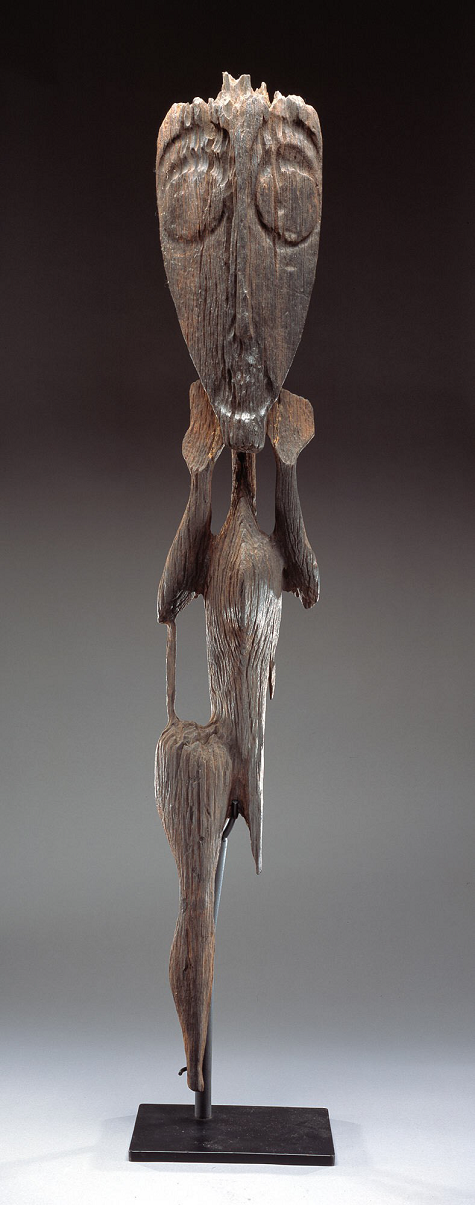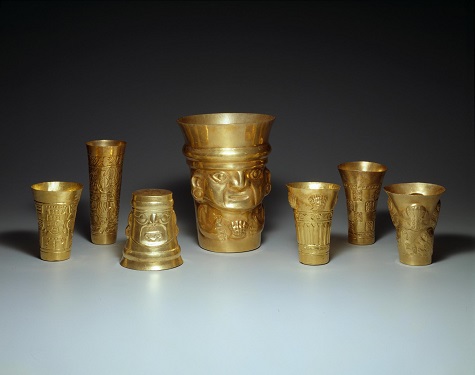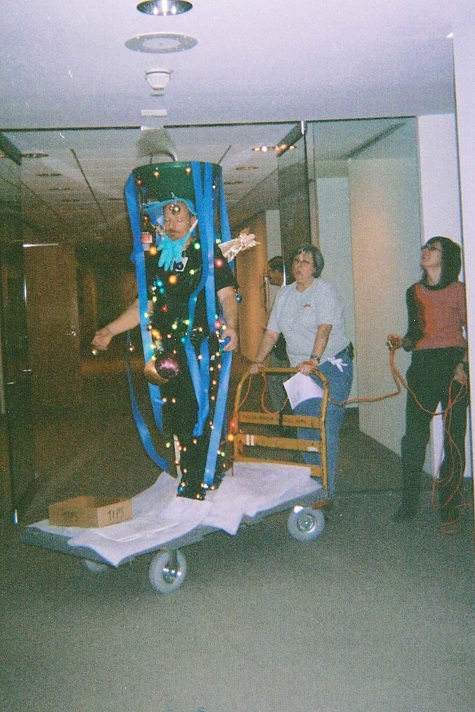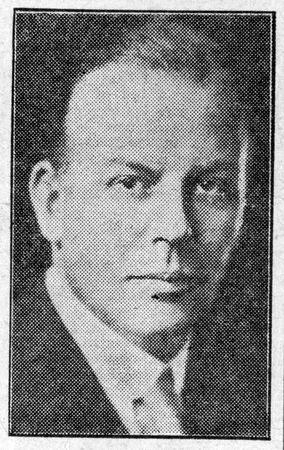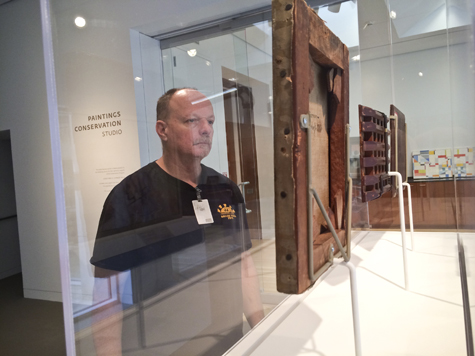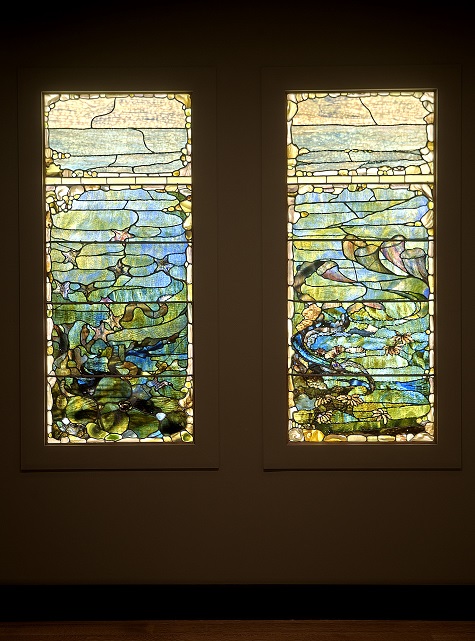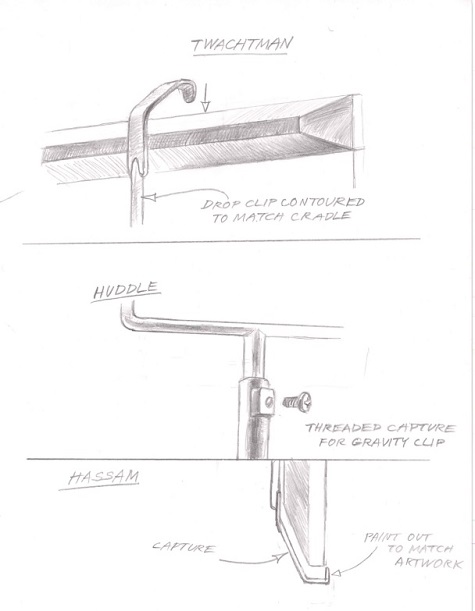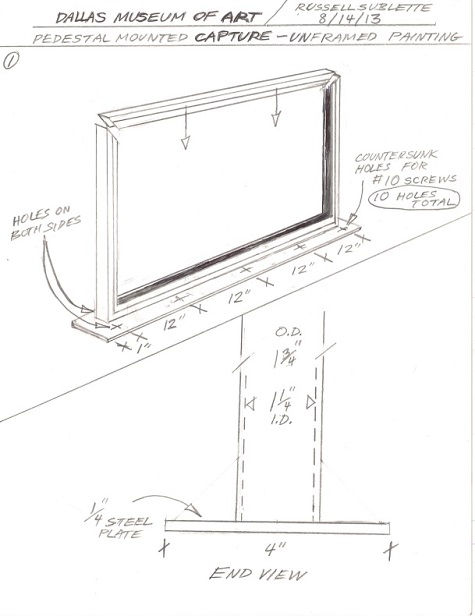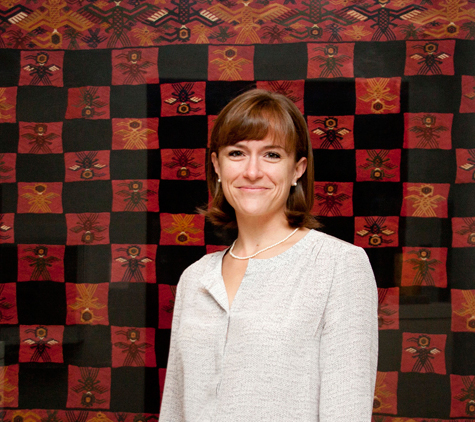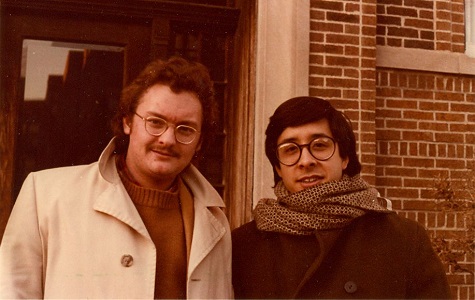A few months ago, the seven other McDermott Interns and I toured art storage with Anne Lenhart, associate registrar for the permanent collection. Each year, McDermott Interns explore the storage facilities and get a sneak peek inside the DMA’s collection. We spotted more than a few hidden gems during the tour, which you can find, too, through our DMA Friends program. DMA Friends points can be redeemed for an Into the Deep reward that explores art storage. See snapshots of the secrets of storage below!
First stop, Main Storage: Adolph Gottlieb’s Orb, 1964, is rolled out for closer inspection. If you would like to see it for yourself, the painting is on view through March in the Museum’s Hoffman Galleries.
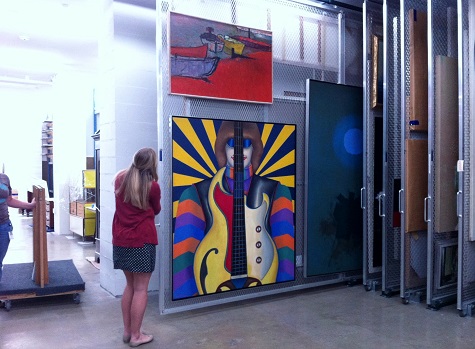
Second stop, Conservation Office: Mark Leonard, chief conservator, works on a painting’s mounting in his old office. With the opening of the Paintings Conservation Studio in November, his work process is now on public display.
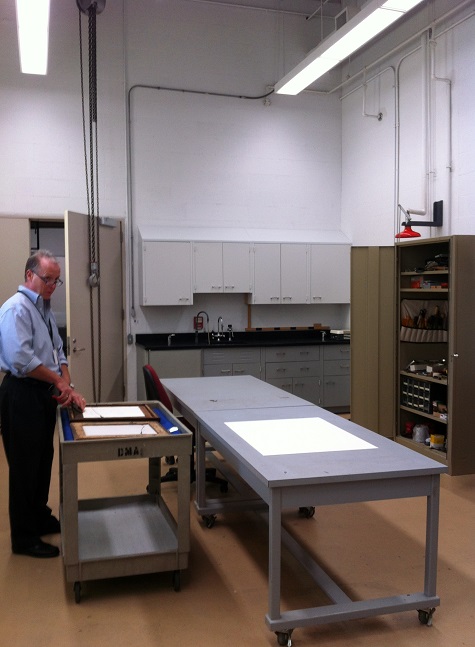
Third stop, Photography: Here works, such as water pitchers, are photographed for publication.

Fourth stop, Cold Storage: Marc Quinn’s blood heads have never been stored here. If they ever do come to the Museum, we’ll have the proper storage for them!
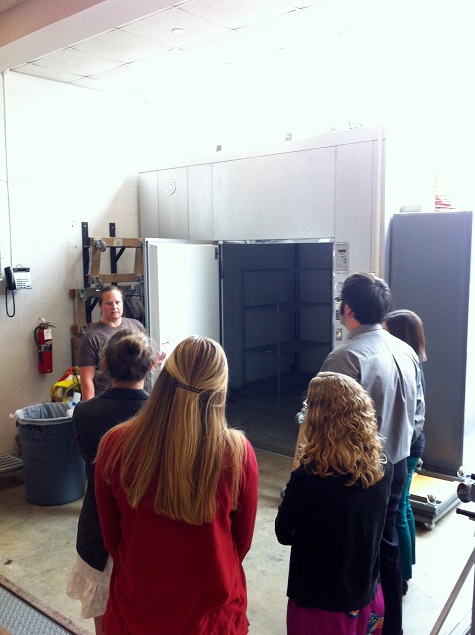
Fifth stop: Textile Storage: Textiles are tightly packed on rungs.
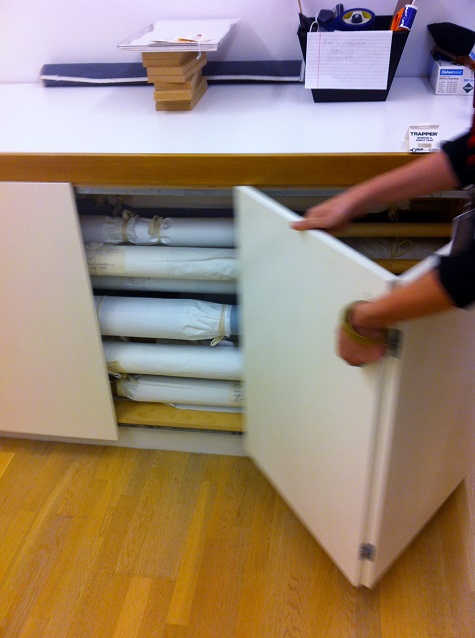
Sixth stop, Large Objects: While some artists do not designate what particular hardware and software to use for digital artworks, some do. We have a nice collection of “ancient” relics.
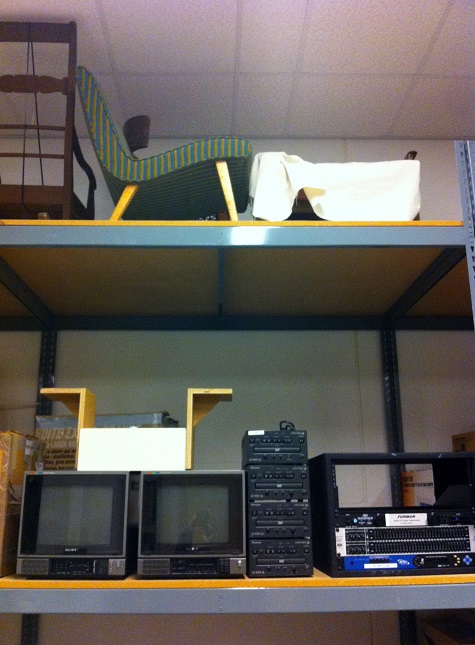
Eighth stop: Meso-American and Small Objects Storage: Anne gives Amy Kaczmarek a closer look.
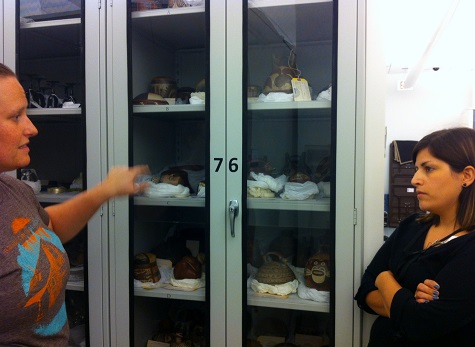
Temple Shipley is the McDermott Curatorial Intern for Contemporary Art at the DMA.

